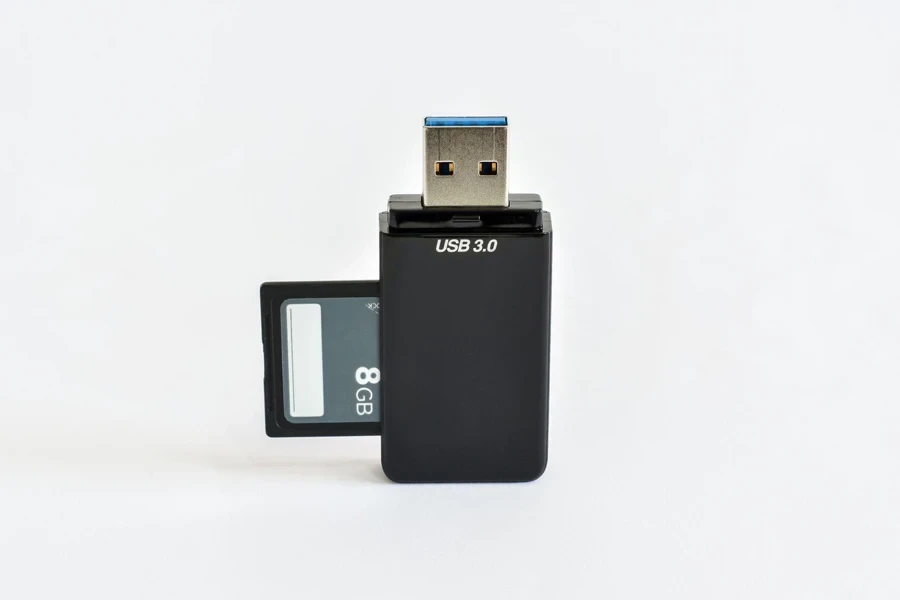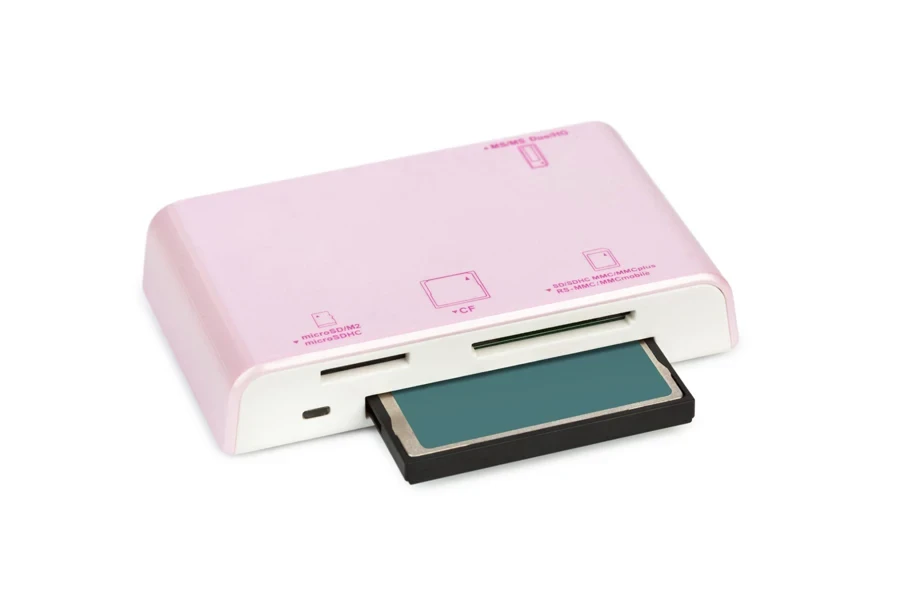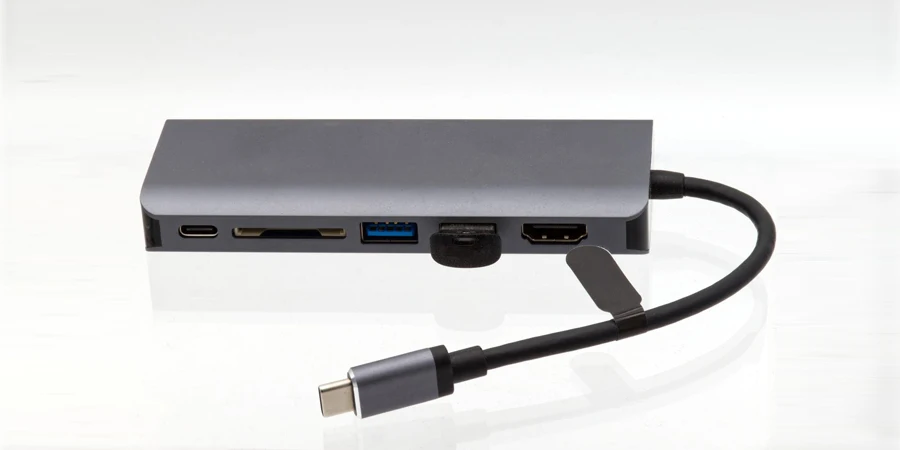As 2024 unfolds, the landscape of card reader technology continues to evolve, markedly enhancing the efficiency of data transfer. These tools are now pivotal in handling diverse data formats swiftly and securely, catering especially to environments where time and reliability are paramount. With innovations focusing on speed, compatibility, and durability, card readers are becoming indispensable in sectors that prioritize robust data management solutions without compromising on performance. This essential technology supports professionals in keeping pace with the increasing demands of digital data handling, ensuring that businesses remain agile and well-equipped.
Table of Contents
Card reader varieties and their applications
Detailed market analysis
Key selection criteria for card readers
Leading card reader models and their features
Conclusion
Card reader varieties and their applications

The diversity of card reader technologies caters to a broad spectrum of business needs, from portable devices for on-the-go professionals to robust, multi-functional units designed for high-volume environments. Each variety is tailored to specific use cases, enhancing data management efficiency across various sectors.
Compact and portable readers: Portable card readers are designed to be compact and easy to carry, making them ideal for professionals who need to manage transactions or data on the move. These devices typically support basic card types like magnetic stripe, chip and PIN, and NFC, which are sufficient for everyday transactions and basic data handling tasks. The rising trend in mobile commerce and on-the-go payment solutions emphasizes the importance of such compact readers in today’s digital ecosystem.
High-speed data transfer models: For environments where time and efficiency are critical, high-speed card readers are essential. These devices are capable of handling extensive data transfers at impressive speeds, crucial for sectors like digital photography and video production. For instance, card readers that support UHS-II standards can facilitate speeds that substantially reduce the time required for large data transfers, which is pivotal during high-stakes assignments where every second counts.
Multi-slot and multi-functional readers: Multi-slot card readers address the need for versatility in handling various card types simultaneously. These are particularly useful in settings that require the use of multiple media formats, such as professional photography studios or design firms. Moreover, the integration of various card slots into a single device reduces clutter and enhances workflow efficiency. Some advanced models even combine card reading capabilities with additional functionalities like mobile connectivity and security features, which broaden their application scope significantly .
The evolving card reader market reflects a clear trajectory towards more integrated, user-centric solutions that accommodate the growing complexity of digital transactions and data management needs. As businesses continue to adapt to these technological advancements, the choice of card reader technology becomes more crucial in maintaining competitive edge and operational efficiency .
Detailed market analysis

Trends in consumer demand: The card reader market is currently witnessing a significant shift towards contactless and mobile device-compatible models, primarily driven by the increasing preference for these technologies in North America and Europe. This trend is supported by the heightened adoption of wireless gadgets and a marked preference for mobile commerce solutions. Moreover, emerging markets in Asia-Pacific, such as China and India, are seeing rapid growth due to their favorable economic climates and the burgeoning use of smartphones which facilitate the use of mobile card readers.
Technological innovations: Technological advancements continue to play a pivotal role in shaping the card reader market. Innovations are primarily focused on enhancing security and expanding the versatility of card readers. This includes the integration of EMV chip and PIN technology, which is becoming a standard due to its enhanced security features. Additionally, near field communication (NFC) technology is being widely adopted, allowing for quicker and more secure transactions. There’s also a significant interest in biometric card readers, which use fingerprint recognition to add an extra layer of security to transactions .
Market leaders and emerging brands: The card reader market is highly competitive with key players like Square, PayPal, and Ingenico leading the way due to their substantial investments in research and development. These companies are at the forefront of introducing innovative products that cater to the evolving demands of the market. Emerging brands are also making a mark by focusing on niche segments and incorporating advanced technologies to offer differentiated products. This competition is fostering a dynamic market environment where continuous innovation is key to gaining and maintaining market share.
Overall, the card reader market is expanding significantly, with technological advancements and changing consumer preferences driving growth across various regions. The focus on security, convenience, and speed of transactions is guiding the development strategies of both established players and new entrants.
Key selection criteria for card readers

Compatibility with devices and memory types: When selecting card readers, compatibility is paramount. It is essential that the chosen card reader supports a wide range of device interfaces and memory card formats to ensure seamless operation across various systems and platforms. This includes support for standard formats like SD, microSD, and CompactFlash, and for the newer formats such as CFexpress and XQD, which are crucial for high-end digital cameras. Additionally, compatibility with both USB Type-C and Type-A connections is beneficial as it provides flexibility in connecting with both modern and older computer systems .
Transfer speed and efficiency: Transfer speed is a critical consideration for professionals whose work relies on quick data access and transfer. High-speed card readers that support UHS-II and CFexpress can drastically reduce the time required for large file transfers, making them ideal for video editors and photographers who deal with large raw files. The efficiency of a card reader is often indicated by its support for the latest data transfer standards, such as USB 3.2 Gen 2, which can offer speeds up to 10 Gbps. This ensures that workflow bottlenecks are minimized and productivity is maximized.
Durability and build quality: The build quality of a card reader determines its durability and reliability, especially for professionals who travel frequently and require rugged equipment. Card readers with a metal body or reinforced construction offer greater protection against physical damage. Weather-resistant features are also valuable for those working in outdoor environments, ensuring that the device remains operational in various climatic conditions. Thus, investing in a well-built card reader can significantly extend its lifespan and reliability in demanding settings.
Price and value considerations: Finally, the cost of a card reader and the value it provides should be balanced. It’s important for buyers to consider not only the purchase price but also the features and longevity offered by the device. Economical models are suitable for basic needs, but higher-priced models that offer better speed, additional slots, and robust construction provide better value in the long run. Evaluating the warranty and customer support offered by the manufacturer can also influence the overall value of the investment, as these factors can impact the long-term usability of the card reader.
Selecting the right card reader involves a careful consideration of these factors to ensure that the device meets professional needs and provides the best return on investment.
Leading card reader models and their features

Review of top models for professional use: For professionals seeking top-tier performance, the ProGrade Digital CFexpress Type B & SD Reader stands out with its exceptionally high read/write speeds, reaching up to 687MB/s and 645MB/s respectively. This device is highly recommended for photographers and videographers using CFexpress and SD card formats, thanks to its dual-slot functionality that minimizes gear clutter.
ProGrade Digital CFexpress Type B & SD Reader: This card reader is ideal for professionals who require high-speed data transfer, offering read/write speeds of up to 687MB/s and 645MB/s, respectively. It supports UHS-I & UHS-II SD, SDHC, SDXC, and CFexpress Type B cards. Its dual-slot functionality allows for handling two different card types simultaneously, making it highly efficient for photographers and videographers using the latest high-resolution cameras.
Sony MRW-G2 CFexpress Card Reader: Known for its high-speed performance, the Sony MRW-G2 supports CFexpress Type A and UHS-II SD cards, making it a versatile choice for users with advanced camera equipment. It offers transfer speeds up to 1250 Mbps, significantly faster than traditional SD card readers. This makes it suitable for rapid file transfers, essential in professional settings where time is critical .
Angelbird CFexpress Type B MK2 Memory Card Reader: This reader is built for durability and high performance, offering transfer speeds up to 20 Gb/s with USB 3.2 Gen 2×2. It’s compatible with a wide range of operating systems and features a robust aluminum housing that is shock and temperature proof. The built-in write protect switch adds a layer of security, useful for professionals handling sensitive data.
Unitek Aluminum 3-Slot Card Reader: Featuring a compact and durable design, the Unitek reader supports SD, microSD, and CF cards. It provides transfer speeds up to 5G/s, which is impressive for a reader that also offers the flexibility to handle three different card types simultaneously. This is particularly beneficial for professionals who use a variety of digital devices and need a reliable tool that can manage multiple media formats.
SanDisk ImageMate All-In-One Reader/Writer: This model stands out for its broad compatibility and high-speed performance, supporting a range of card formats including UHS-I, UHS-II, and CF cards. With a speed performance of up to 500 MB/s, it is ideal for transferring large files quickly. Its slim design and detachable metal stand make it easy to integrate into any professional workspace .
Best picks for everyday use: For everyday users, the Sony MRW-G2 CFexpress Card Reader offers an excellent balance of speed and compatibility, supporting CFexpress Type A and various SD card formats. Its high transfer rate of 1250 Mbps makes it particularly suitable for users with advanced cameras that require rapid data transfer.
For those looking for versatility, the UGREEN 4-Card Simultaneous SD Card Reader is an ideal choice. Despite its compact size, this reader can handle up to four different card formats simultaneously, making it perfect for users who need to manage multiple data sources on the go .
Cost-effective choices for budget-conscious buyers: For budget-conscious buyers, the Delkin Devices USB 3.2 CFexpress Type B Card Reader offers great value. It provides impressive speeds of up to 10 Gbps for photo and video transfer, and it’s equipped with both USB Type-C and Type-A connectors, making it versatile for both PC and Mac users. Its durable construction and budget-friendly price make it an appealing choice for those looking for both performance and affordability.
Each of these models caters to different needs, from high-speed professional use to versatile, everyday functionality and cost-effective solutions, ensuring that there’s a card reader suitable for various types of users and scenarios.
Conclusion
Selecting the ideal card reader in 2024 hinges on understanding and prioritizing key features such as compatibility, speed, durability, and value. This roundup of the year’s leading models—from the high-speed ProGrade Digital for professionals to the versatile SanDisk ImageMate for everyday use—illustrates the range of options tailored to diverse professional needs. For those investing in new technology, considering these factors will ensure they choose a device that enhances workflow efficiency and meets evolving digital demands.




